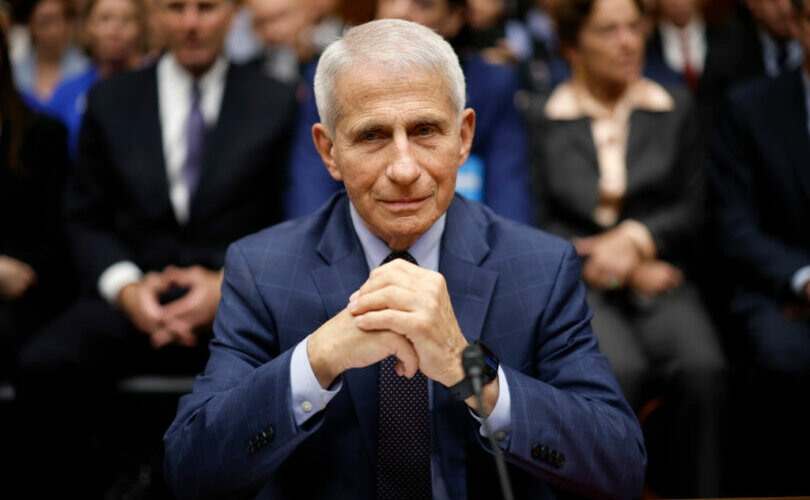Energy
Fresh Off Their Major Victory On Gas Export Terminals, Enviros Set Sights On New Target: Oil Exports

 From the Daily Caller News Foundation
From the Daily Caller News Foundation
By NICK POPE
Months after President Joe Biden handed environmentalists a major win by pausing new liquefied natural gas (LNG) export terminals, activist groups are beginning to turn their attention to deepwater oil export hubs.
A coalition of 19 climate activist organizations — including the Sierra Club, Earthjustice and the Sunrise Movement’s New Orleans chapter — wrote a Thursday letter to Biden, Transportation Secretary Pete Buttigieg and Maritime Administration Administrator Adm. Ann Phillips urging the administration to halt approvals of proposed deepwater crude oil export facilities. The letter signals that the environmental lobby is turning its attention to a new target after the White House opted to pause new LNG export hub approvals in January following a considerable activist campaign.
“The undersigned urge the White House and Department of Transportation (DOT) to halt and reevaluate its licensing review of proposed deepwater crude oil export facilities to update and ensure the validity of the agency’s “national interest” determinations and related Deepwater Port Act (DWPA) project review,” the activist groups wrote. “The licensing of massive deepwater crude oil exports leads to disastrous climate-disrupting pollution and environmental injustices and would lock in decades of fossil fuel dependence that undercut the pathway to a clean energy economy.”
Oil Export Terminals Letter by Nick Pope on Scribd
“At minimum, we ask the Administration to update its outdated analysis under the DWPA and National Environmental Policy Act (NEPA) to address the harms generated by expansive oil exports on the climate, as well as consequences for environmental justice communities along the Gulf Coast, and for the national interest in energy sufficiency,” they continued.
American oil exports are “key” to global supply, especially in the wake of Russia’s invasion of Ukraine and the resulting changes in global energy markets, according to Bloomberg News. The U.S. became a net oil exporter in 2020 for the first time since 1949, according to the U.S. Energy Information Administration, and global oil demand is expected to grow through at least 2028, according to the International Energy Agency.
“It’s hard to call yourself a Climate President when more fossil fuels are being produced and exported by the U.S. than ever before,” James Hiatt, founder of For a Better Bayou, one of the letter’s signatories, said in a statement. “Approving massive oil export terminals in the Gulf of Mexico not only exacerbates our deadly fossil fuel addiction, but also blatantly disregards the health and wellbeing of environmental justice communities in the region. This administration is acting less like a beacon of hope and more like an enabler of dirty energy. It is time for a course correction towards real climate action.”
Biden handed environmental activists a huge victory when he paused approvals for new LNG export terminals in January, instructing his administration to closely examine the climate impacts of proposed facilities alongside economic and security considerations. The LNG pause stands as one of Biden’s biggest decisions on climate through his first term, and activists applauded the move while elected Republicans and the oil and gas industry have strongly opposed it.
Well-funded environmental organizations and young voters figure to be key bastions of support for Biden in the 2024 election cycle as he attempts to secure a second term in office and prevent the return of former President Donald Trump. While the Biden administration has spent more than $1 trillion and pushed stringent regulations to advance its sweeping climate agenda, most voters remain most concerned about the economy, inflation and immigration, with a much smaller share identifying climate change as the top issue facing the country, according to recent polling data.
Neither the White House nor the DOT responded immediately to requests for comment.
Daily Caller
AI Needs Natural Gas To Survive


From the Daily Caller News Foundation
By David Blackmon
As recent studies project a big rise in power generation demand from the big datacenters that are proliferating around the United States, the big question continues to focus in on what forms of generation will rise to meet the new demand. Most datacenters have plans to initially interconnect into local power grids, but the sheer magnitude of their energy needs threatens to outstrip the ability of grid managers to expand supply fast enough.
This hunger for more affordable, 24/7 baseload capacity is leading to a variety of proposed solutions, including President Donald Trump’s new executive orders focused on reviving the nation’s coal industry, scheduled to be signed Tuesday afternoon. But efforts to restart the permitting of new coal-fired power plants in the US will require additional policy changes, efforts which will take time and could ultimately fail. In the meantime, datacenter developers find themselves having to delay construction and completion dates until firm power supply can be secured.
Datacenters specific to AI technology require ever-increasing power loads. For instance, a single AI query can consume nearly ten times the power of a traditional internet search, and projections suggest that U.S. data center electricity consumption could double or even triple by 2030, rising from about 4-5% of total U.S. electricity today to as much as 9-12%. Globally, data centers could see usage climb from around 536 terawatt-hours (TWh) in 2025 to over 1,000 TWh by 2030. In January, a report from the American Security Project estimated that datacenters could consume about 12% of all U.S. power supply.
Obviously, the situation calls for innovative solutions. A pair of big players in the natural gas industry, Liberty Energy and Range Resources, announced on April 8 plans to diversify into the power generation business with the development of a major new natural gas power plant to be located in the Pittsburgh area. Partnering with Imperial Land Corporation (ILC), Liberty and Range will locate the major power generation plant in the Fort Cherry Development District, a Class A industrial park being developed by ILC.
“The strategic collaboration between Liberty, ILC, and Range will focus on a dedicated power generation facility tailored to meet the energy demands of data centers, industrial facilities, and other high-energy-use businesses in Pennsylvania,” the companies said in a joint release.
Plans for this new natural gas power project follows closely on the heels of the March 22 announcement for plans to transform the largest coal-fired power plant in Pennsylvania, the Homer City generating station, into a new gas-fired facility. The planned revitalized plant would house 7 natural gas turbines with a combined capacity of 4.5 GW, enough power 3 million homes.
Both the Homer City station and the Fort Cherry plant will use gas produced out of the Appalachia region’s massive Marcellus Shale formation, the most prolific gas basin in North America. But plans like these by gas companies to invest in their own products for power needs aren’t isolated to Pennsylvania.
In late January, big Permian Basin oil and gas producer Diamondback Energy told investors that it is seeking equity partners to develop a major gas-fired plan on its own acreage in the region. The facility would primarily supply electricity to data centers, which are expected to proliferate in Texas due to the AI boom, while also providing power for Diamondback’s own field operations. This dual-purpose approach could lower the company’s power costs and create a new revenue stream by selling excess electricity.
Prospects for expansion of gas generation in the U.S. received a big boost in January when GE Vernova announced plans for a $600 million expansion of its manufacturing capacity for gas turbines and other products in the U.S. GE Vernova is the main supplier of turbines for U.S. power generation needs. The company plans to build 37 gas power turbines in 2025, with a potential increase to over 70 by 2027, to meet rising energy demands.
The bottom line on these and other recent events is this: Natural gas is quickly becoming the power generation fuel of choice to feed the needs of the expanding datacenter industry through 2035, and potentially beyond. Given that reality, the smart thing to do for these and other companies in the natural gas business is to put down big bets on themselves.
David Blackmon is an energy writer and consultant based in Texas. He spent 40 years in the oil and gas business, where he specialized in public policy and communications.
Bjorn Lomborg
The stupidity of Net Zero | Bjorn Lomborg on how climate alarmism leads to economic crisis

From spiked on YouTube
Note: This interview is focused on Europe and the UK. It very much applies to Canada. The 2025 Federal Election which will see Canadians choose between a more common sense approach, and spending the next 4 years continuing down the path of pursuing “The Stupidity of Net Zero”.
European industry is in freefall, and Net Zero is to blame.
Here, climate economist Bjorn Lomborg – author of Best Things First and False Alarm – explains how panic over climate change is doing far more damage than climate change itself. Swapping cheap and dependable fossil fuels for unreliable and expensive renewables costs our economies trillions, but for little environmental gain, Lomborg says.
Plus, he tackles the myth of the ‘climate apocalypse’ and explains why there are more polar bears than ever.
Support spiked: https://www.spiked-online.com/support/
Sign up to spiked’s newsletters: https://www.spiked-online.com/newslet…
-

 2025 Federal Election2 days ago
2025 Federal Election2 days agoRCMP memo warns of Chinese interference on Canadian university campuses to affect election
-

 2025 Federal Election1 day ago
2025 Federal Election1 day agoResearchers Link China’s Intelligence and Elite Influence Arms to B.C. Government, Liberal Party, and Trudeau-Appointed Senator
-

 COVID-191 day ago
COVID-191 day agoFauci, top COVID officials have criminal referral requests filed against them in 7 states
-

 Alberta2 days ago
Alberta2 days agoAlberta takes big step towards shorter wait times and higher quality health care
-

 Energy2 days ago
Energy2 days agoTrump signs four executive orders promoting coal industry
-

 Business2 days ago
Business2 days agoStocks soar after Trump suspends tariffs
-

 Business2 days ago
Business2 days agoScott Bessent Says Trump’s Goal Was Always To Get Trading Partners To Table After Major Pause Announcement
-

 COVID-192 days ago
COVID-192 days agoBiden Admin concealed report on earliest COVID cases from 2019









